I’m currently taking part in Critical Hit 2015 in Montreal, an incubator for experimental wearable games. This week, we started our first prototype! The God of Randomness teamed me up with Owen Bell, Milin Li and Mónica Rikic – so 3 of our 4 members are programmers, but luckily my team members are also great at wiring, sewing and making. The theme for the first game was “mini & forbidden”.
The Concept
Our first thematic impulses were to make something with either witchcraft/voodoo or bacteria. This quickly lead to the idea that somebody is ill and must be cured by one or multiple people, possibly using magic. From there we got to our current idea: Two people are ill – their heart rate, body temperature and digestion are either two high or too low – and both try to get healthy before the other one does. To do that, they eat fruits. Each fruit raises or lowers one or two of the aforementioned properties. (To keep it replayable, those effects are randomly decided at the start of each round.) It’s a logic puzzle: The players have to find out what each fruit does by eating them, then look at their current status and figure out which fruits to eat to get healthy. In the end version of the game, there should be neither screen nor keyboard: The players actually eat real fruit with specially made forks that can sense fruit types and wear aprons with LEDs showing their status.
After we got that game idea, we found Pixelate, a “Guitar-Hero-style eating game which detects food you are eating”. We did our own Arduino sketches and fruit resistance experiments, but were heavily inspired by the fork they used.
But enough text – have a few pictures of us working on it over the week!
Working on the Game
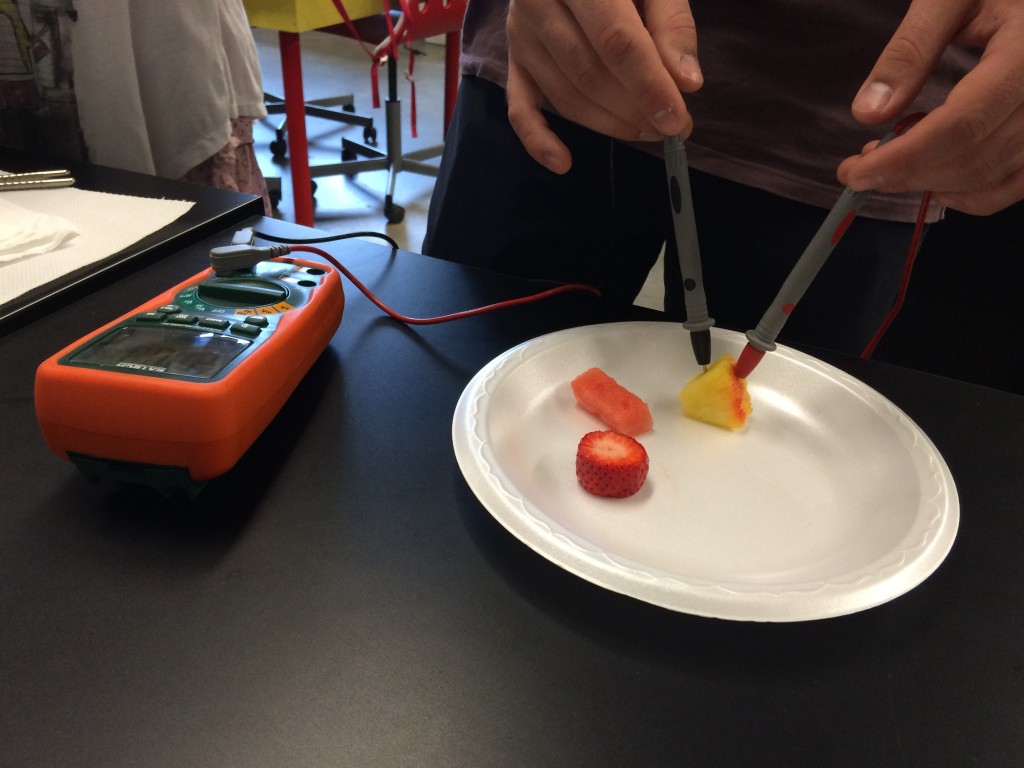
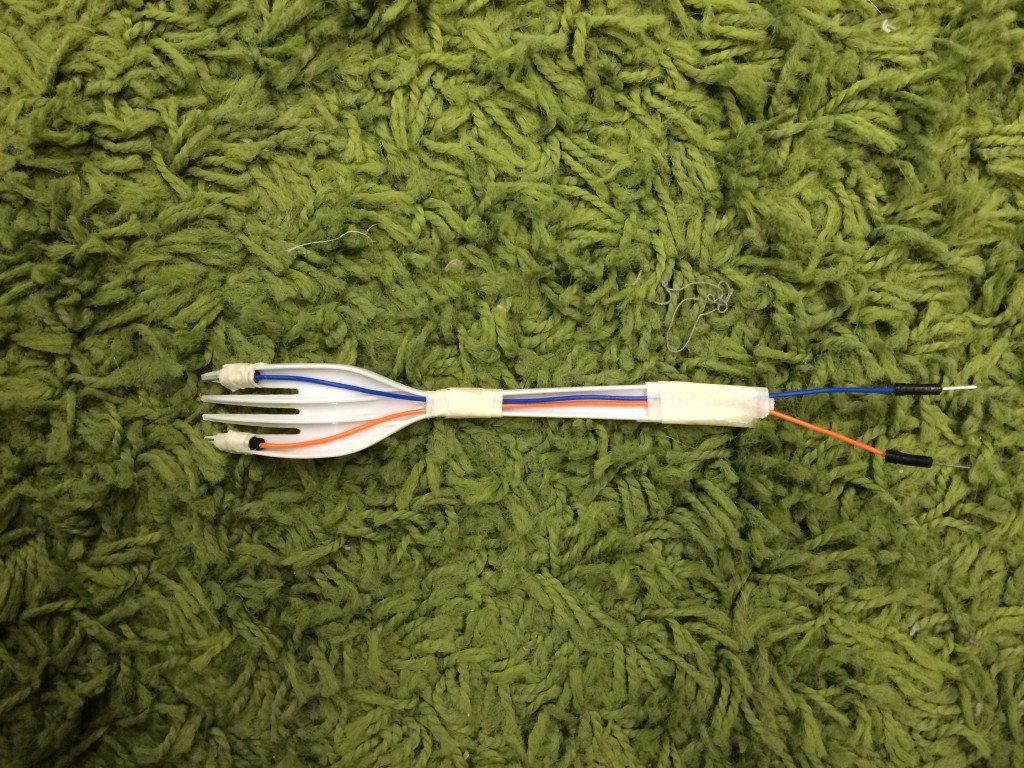

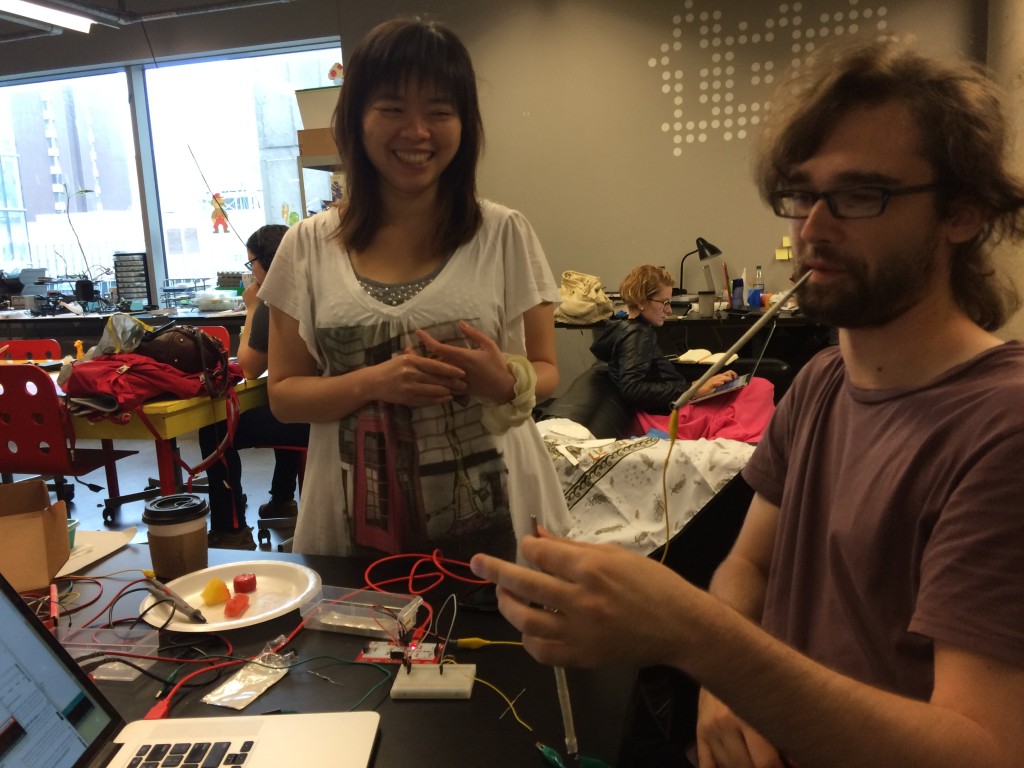
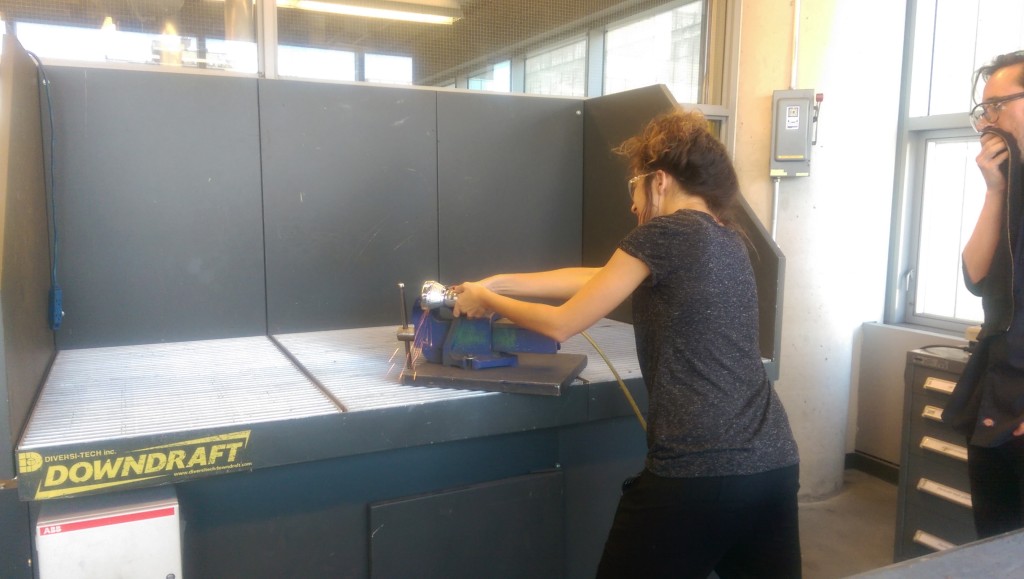


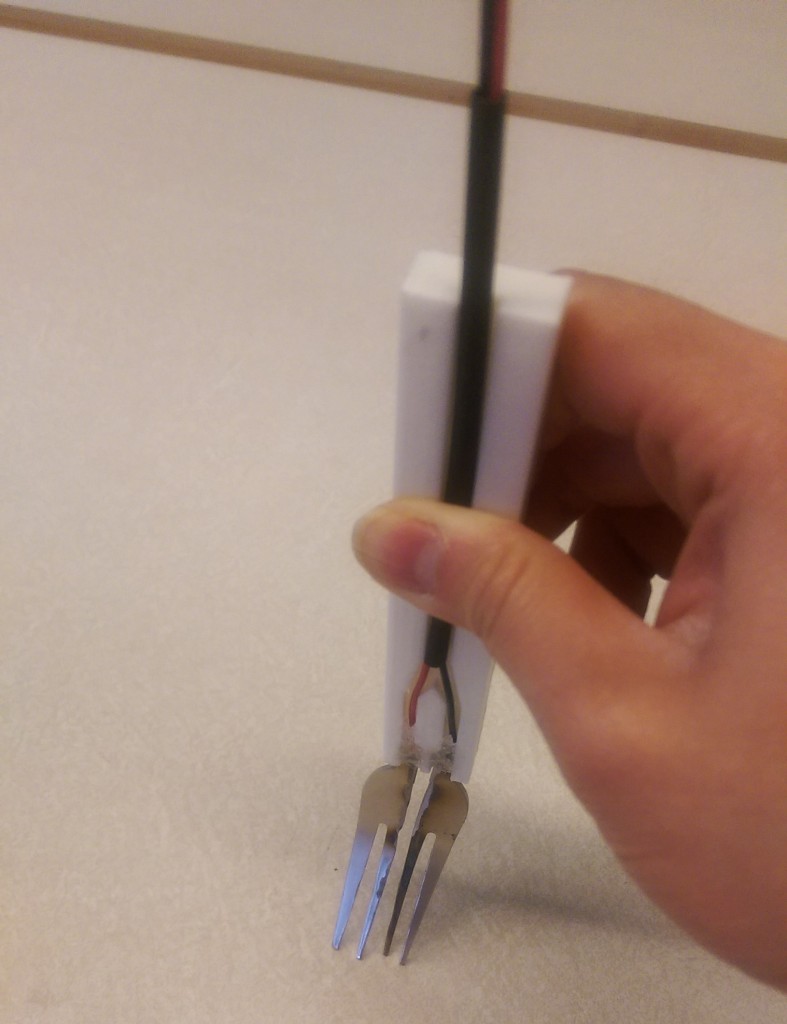
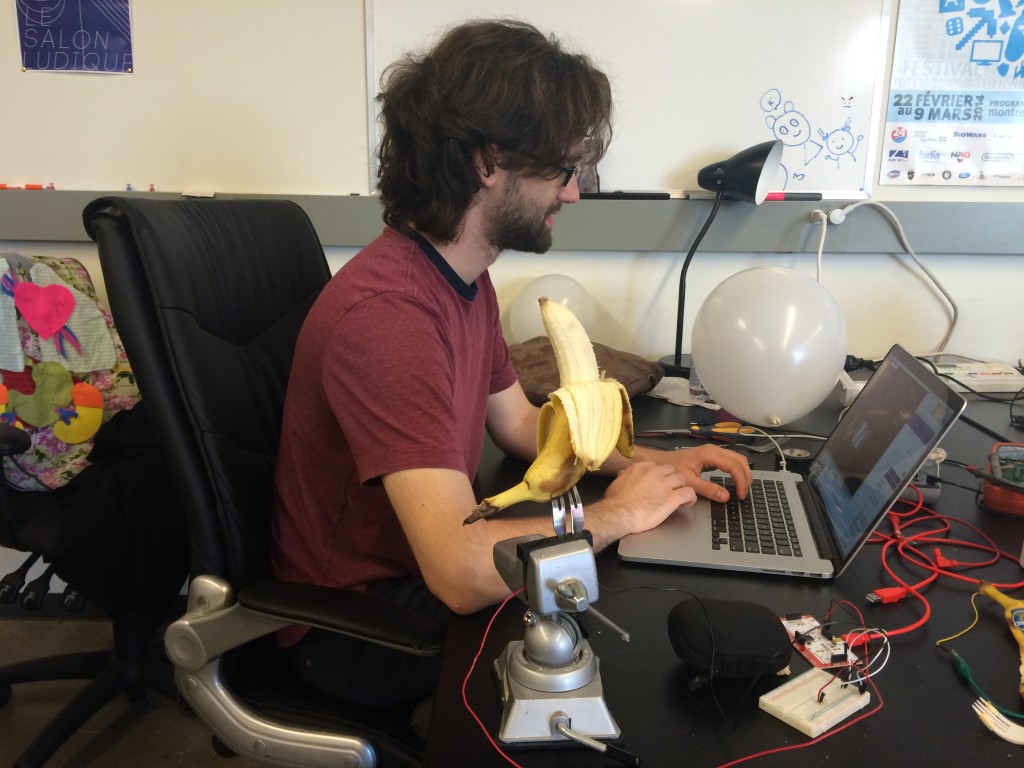


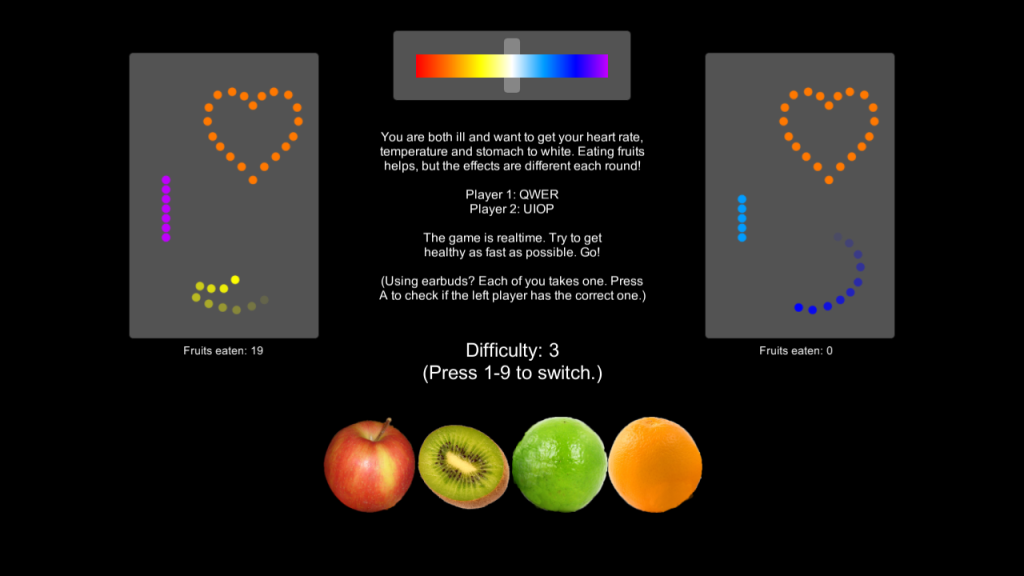
The Playtesting Session
On Friday, all the games made this week were put through their paces to find out what works and what should be improved next week. We didn’t have our physical parts ready yet, so the digital prototype I made had to substitute for the full experience. I occasionally tested with people over the week, but never with two people who hadn’t played before – and (in retrospect unsurprisingly) it didn’t go very well: Most people didn’t figure out how the fruits worked. Other complaints were that the feedback is too subtle and/or lacking, that the two players barely interact and that the competition doesn’t put enough pressure on the player. Another thing that didn’t work out well was using fruits: Some people thought those fruits have effects like their real counterparts, while the effects are actually randomized each round.
I talked a lot at the end with Tom Fennewald, who participated in the playtesting sessions. Among other things, he suggested that the basic mechanic of the game is fine and what is really missing is adjustable transparency as difficulty: Show what the fruits actually do to start it out like a tutorial, then slowly make it harder by hiding effects.
We will try this and other ideas that we had next week. I’m looking forward to see where this is going!
Oh, and I definitely learned one thing: I should test things more and earlier.